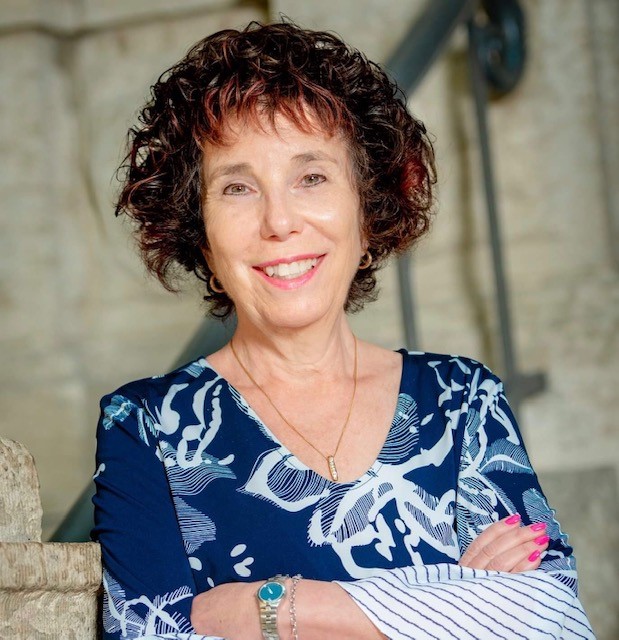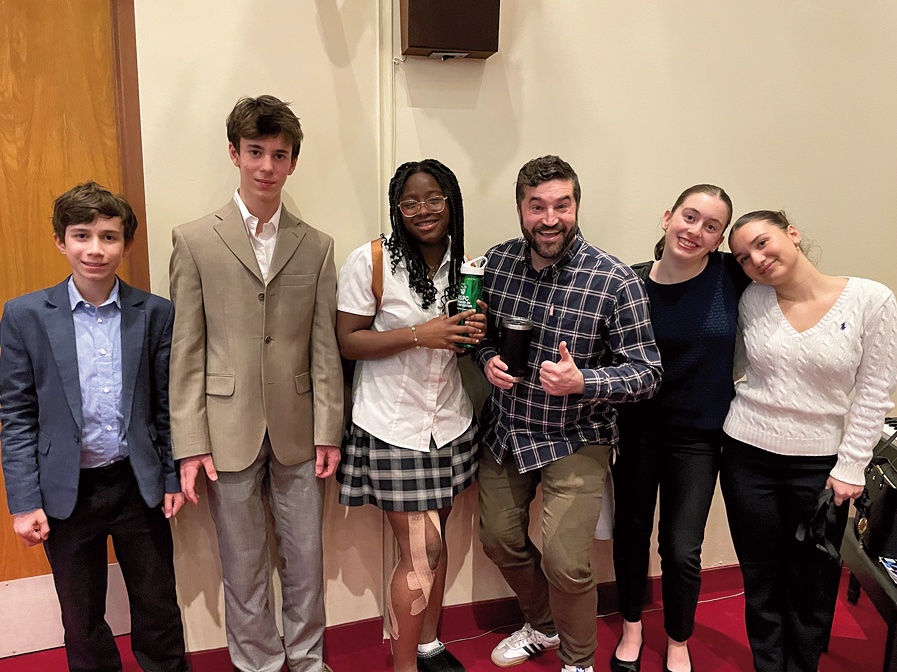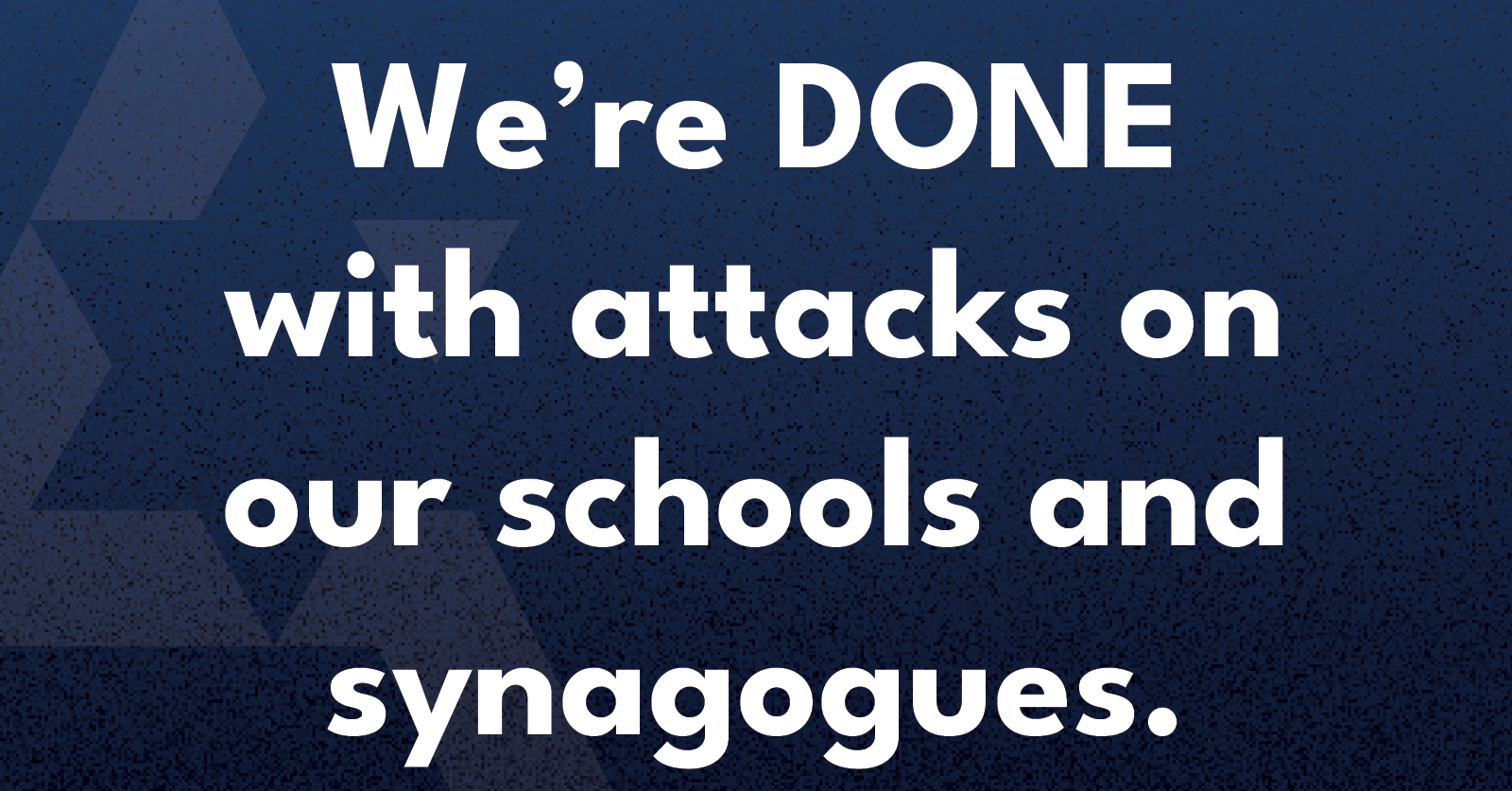Local News
Winnipeg Symphony Orchestra to feature “Violins of Hope” at December 3 concert
By Myron Love On Saturday, December 3, the Winnipeg Symphony Orchestra will be featuring a program with a strong emphasis on music with Jewish connections – pieces for example such as Prokofiev’s “Over-ture on Hebrew Themes,” Joseph Achron’s “Hebrew Melody, Op. 33,” Marc Lavry’s “Three Jewish Dances,” and John Williams’ “Theme from Schindler’s List” in a concert featuring two violins that were saved from the Holocaust.
“In a moving and unforgettable program, the audience will hear the stories behind both of the violins and experiences in performance the sounds the owners heard as they played them,” notes Brent Johnson, the WSO’s associate director, education and community. “This concert will offer a musical journey from Holocaust to hope.”
The violins will be played by Concert Master Gwen Hoebig and Sonia Lazar, a member of the WSO’s first violin section. Lazar (who is married to Ezra Lazar, the son of Matthew and Nola) is eagerly looking forward to playing one of the violins. She and Hoebig will also be doing solo performances.
This concert, notes Jim Manishen, the WSO’s artistic consultant, was originally supposed to have been performed two years ago – but was shut down by Covid. The story behind it begins in 2016 when Shelley Fain-tuch, the Jewish Federation of Winnpeg’s former community relations director, first heard the two violins being played while attending an AIPAC conference in Washington, D.C. “I was in a cafeteria,” she recalls. “At the sounds of the violins, everyone went silent.”
As soon as she returned to Winnipeg, Faintuch contacted Jim Manishen about arranging a concert featuring the violins.
Faintuch explains how the violins that were saved from the ashes of the Holocaust came to reemerge in public. It began when someone in Israel brought a violin to Amnon and Avshalom Weinstein for repairs. While examining the violin, the two Israeli violin builders saw black ash inside and realized that this was a violin that had come from a concentration camps. The word got out and soon the brothers were receiving many more violins for repair that had come out of the camps. Over time, the brothers amassed a collection of several of these violins.
“These violins of hope have been played in concerts by prestigious symphony orchestras throughout America,” Faintuch says.
Of the two violins that are coming to the WSO, it is known that one of them, a Stradivarius, was owned by the Hecht family, originally from Billefeld in Germany. The family fled to Holland after the Nazis came to power. In Amsterdam, Mrs. Hecht – whose first name was Fanny, and who played the violin, became friendly with a neighbour, Helena Visser, who was also a violin player. Before the Nazis rounded up all the Jews in Amsterdam – including the Hechts – Fanny Hecht gave her violin to her neighbour for safekeeping.
The Hecht family, Fanny and Alex, and their sons, Fritz and Ernst, were all murdered by the Nazis.
When the Visser family, on a visit to Yad Vashem, learned the fate of the Hecht family and, subsequently – about the Violins for Hope, they donated the Hecht violin to Amnon and Avshalom.
The provenance of the second violin at the concert isn’t known.
Avshalem, Shelley Faintuch notes, will be in attendance at the concert and will be telling the story of the violins.
In addition to the appearance of the violins at the concert, Brent Johnson notes, the instruments will be part of a Holocaust awareness program in schools – featuring presentations by Faintuch and performances by Sonia Lazar at several Winnipeg high schools, including Grey Academy.
“We are also offering students a special discounted price for the concert of $25,” Johnson adds. “Students can order up to six tickets at our special price.”
The violins from VOH will be arriving in Winnipeg on November 22.
Johnson notes that, prior to the concert, there will be an extended pre-concert talk, from 6:40-7:10 – with appearances from Shelley Faintuch, Avshalom Weinstein. and WSO conductor Daniel Raiskin.
Jim Manishen reports that, following the concert, the two violins will be loaned to the Canadian Museum for Human Rights where they will be on display until March. While at the museum there will be numerous outreach programming presentations once again involving Shelley Faintuch and Sonia Lazar – including a special presentation and performance on Jan. 27, 2023 (International Holocaust Remembrance Day) at the CMHR Garden of Contemplation featuring violinist Victor Schultz.
Johnson reports that more than 1400 tickets have already been sold for the concert so interested readers should consider ordering tickets as soon as they can by phoning the box office at 204 949-3999 or going online at wso.ca .
Adds Jim Manishen: “These violins have to be played and heard.”
And Johnson concludes that “in a moving and unforgettable program, the audience at the concert will hear the stories behind both violins and experience in performance the sounds the owners heard as they played them – a musical journey from Holocaust to hope.”
Local News
Cheryl Hirsch Katz, Jewish Child and Family Service’s longest serving staffer, set to retire at end of the month

By MYRON LOVE “I loved working at Jewish Child and Family Service,” says Cheryl Hirsh Katz, who is due to retire at the end of June. “I have always appreciated the warm and welcoming atmosphere here. I feel that the people working here are my extended family. I am going to miss my colleagues”.
“I have derived great satisfaction over the years to have been able to help many people in our community of all ages through my work at JCFS,” she continues.
After 44 years at the agency, Katz, the longest-serving member of the staff, was given an appreciative send-off at the JCFS’s recent (June 23) Annual General Meeting at the Shaarey Zedek Synagogue.
The daughter of Art and Bess Hirsh, Cheryl grew up in Garden City. She attended Peretz School, then Jefferson Junior High and Garden City Collegiate. She joined the staff of JCFS in 1981, shortly after receiving her Bachelor of Social Work degree.
She earned an MSW in 1990.
“I chose to become a social worker,” she recalls, “because I always wanted to be able to help people.”
Katz was originally hired by JCFS to work with newcomers. After a couple of years, she was given responsibility for looking after the needs of older adults.
“I really enjoyed working in older adult services,” she says. “That is where I spent the bulk of my time at JCFS.”
After ten years as a case worker, she was promoted to a supervisory role. Later, she was also given responsibility for mental health and addictions programming and settlement services, while keeping the older adult files under her purview.
“As a supervisor, I wasn’t directly involved with individual clients,” she points out. “I was more involved with programming. Among the programs for seniors we organized were – for example – sessions on elder abuse, digital storytelling and memory loss.”
She notes that one of the trends she has seen over the last 44 years is that people are living longer and living in their homes longer. A lot more of our clients are living well into their 90s,” she observes. “We have had to continually expand our staff and the services we provide in order to accommodate the growing demands of an aging population.”
She also spoke of the mental health needs of seniors and aging Holocaust survivors.
She says that she has mixed feelings about leaving JCFS. “After so many years working full time, I am going to have to create a new routine,” she comments.
She notes that, now that she is retired, she will have more time to spend with her parents – who are in their 90s.
And then, there are the two dogs to look after. “I will have time now to try new activities,” she says. “ I might learn to play mah-jong.”
She speaks about maybe doing some traveling – although her husband, Murray, is still working full time.
(She and Murray have one daughter, Farah.)
“Retirement may also include some volunteering,” she adds.
It is quite likely, she will be continuing her association with JCFS but in a volunteer capacity.
Local News
Gray Academy students shine in provincial, national debating competitions

By MYRON LOVE It has been another good year for Gray Academy’s high school students who participated in provincial and national debating competitions. The best results were recorded by Grade 9 student Noa Mednikov, who finished fourth overall nationally, fourth in interpretive reading, and fifth in persuasive speaking at the junior National Public Speaking Championship in early May in Vancouver.
Last October, in the Junior Provincial British Parliamentary Championship – which was held at St. John’s-Ravenscourt – Noa and her partner, Raya Braunstein, finished third as a team while Raya placed third in individual debating.
Their fellow Grade 9 student Maxim Moscalenkov tied for first in persuasive speaking in Vancouver, while the Gray Academy team of Gabe Tapper and Aaron Koplovich finished fifth. Aaron also finished fifth in his individual debate.
Earlier, in March, Maxim finished fifth in the Provincial Juniors debating competition, which was held at Balmoral Hall He and his debate partner, Nate Shenkarow, finished seventh among the teams entered. Last November, he and partner, Ethan Tenenbein, finished seventh in the Junior Prepared Tournament – just behind the Gray Academy team of Nate Shenkarow and Jack Kay.
At the senior high level in that competition, the team of Jacob Tenenbein and Jonah Novoseller finished fourth and Jacob was recognized as fifth best in an individual capacity. Jonah and Jacob also paired up to win the Asper Cup, which was held at their home school.
Jacob represented Manitoba at the Junior National Speech Championship in Vancouver in May and, last October, he and Grade 12 Gray Academy students Julie Krozkin and Daniel Bokser represented Canada at an international debating tournament in Bermuda.
Gray Academy’s debating program was introduced by Linda Martin in 2003. She also led the debating teams at Balmoral Hall. In 2011, Martin was succeeded by Gray Academy high school English teacher Andrew Kaplan.
“Andrew has done a wonderful job with the debating program” says Martin, who has a debating trophy at Gray Academy named in her honour, as well as a provincial trophy for best individual junior debater. “Over the years, Gray Academy students have done very well in many local, national and international competitions,” she adds.
About three weeks ago, this writer had the opportunity to sit down with Andrew Kaplan and six of the school’s top debaters while they discussed the benefits of learning how to debate. According to Noah Strauss – who competed in the Junior Provincials at Balmoral Hall in March, public speaking leaves him with a feeling of accomplishment.
“It’s a good skill set to have,” he observes. “It builds confidence.”
“A benefit of being able to debate is that you learn how to convince people that you know what you are talking about,” adds Maxim Moscolenkov.
Raya Braunstein notes that being able to debate is a skill that she expects to be helpful in many university courses which she may choose to take.
As Andrew Kaplan notes, the ability to express yourself has a great impact in whatever career you choose to pursue.
He points out that debating is compulsory at Gray Academy for all Grade 7 and 8 students – and students can continue debating as an option in the higher grades
Of course, competitive debating is not for everyone. For those students who opt to take that path, the journey begins with internal school debate competition – with the top debating teams and individuals qualifying for local tournaments and – potentially – beyond.
Andrew Kaplan reports that a small number of high schools in Winnipeg and southern Manitoba have active debating programs – including St. Johns Ravenscourt, St. Paul’s High School, St. Mary’s Academy, Garden City and Maples Collegiates in the Seven Oaks School Division, St. Maurice (a Catholic School), as well as Morden Collegiate and Dasmesh, a Sikh private school.
Kaplan expresses his appreciation to the Asper Foundation and an endowment spearheaded by the Kives Family for providing funding for the Gray Academy debating program – as well as the Andrew Slough Foundation – which was established by his friends in memory of the outstanding former Ravenscourt student debater and lawyer who passed away suddenly two years ago at the still young age of 38.
I am confident that our Jewish community can look forward to the continued success of Gray Academy’s star debaters and to the continual emergence of future stars as the times goes by.
Local News
Antisemitism has crept into grade school in Canada

Antisemitism in Canada has moved beyond protests and politics; it is now entering classrooms and altering how Jewish children see themselves functioning within them.
A a university student I have observed the experience of my younger brother in grade eight as a Jewish student. Over the past few months, his school has been at the center of several deeply troubling incidents that have made him feel unsafe in our parks, community, and even his school. Swastikas were drawn around the community, in parks and ponds. Additionally, an older man, who claims to be a pro-Palestinian influencer, stood outside his predominantly Jewish school wearing a keffiyeh, filming a video which then circulated between students on TikTok.
This same man later showed up to our local Jewish community center in keffiyeh to allegedly watch his son play basketball where my brother and many of his classmates go for their lessons, basketball games, and Jewish events. These moments made him and his peers feel watched and targeted just for being Jewish. Local political representatives condemned the incidents and raised awareness about antisemitism, but the fear among students didn’t go away. The feeling of being targeted for simply existing has been taught to my brother, something my parents had tried their hardest to escape from.
Most recently, my brother was chosen to represent his school at a regional science fair. When one of the judges arrived wearing a keffiyeh, he froze. For many, including my brother after the incidents he has faced, the keffiyeh represents a political message. But even more so for my younger brother, it is tied to the fear and intimidation he had already experienced. He felt nervous, distracted, and unsure of how to act.
This is not about silencing political expression. It is about a child who came to share his ideas and left feeling uncertain and afraid. It is about the atmosphere forming in Canadian schools, where Jewish students are being made to feel targeted and unwelcome.
His school made an effort to address the incidents, but the impact is lasting. Posts on social media, much can be very vague at times about inclusion cannot fully undo the feeling of being singled out. A kind word from a teacher does not erase the fear that builds when threats are left unspoken but deeply felt.
I am writing this as a sister who watched her younger brother lose a moment that should have been filled with confidence and pride. He deserved to feel safe. So do all Jewish students in this country.
Moving forward, schools must take concrete steps to protect all students. Antisemitism cannot only be addressed when it becomes violent or overt. It must also be recognized when it appears as intimidation, symbolic targeting, or political messaging that creates fear among students. Children should never have to question whether they are safe in their own classrooms or community spaces.
Events that are meant to support and celebrate students must remain focused on them. Individuals who feel the need to bring political symbols or messages into school grounds or children’s events should not be welcomed in those spaces. Schools must make it clear that their environments exist to support learning, safety, and inclusion, not to host agendas that can intimidate or isolate students.
Administrators and educators must develop clear guidelines for identifying and responding to antisemitic behavior in all its forms. This includes strengthening security measures, offering ongoing staff training, and engaging directly with Jewish families to understand their concerns. Inclusion is not a one-time statement. It is a responsibility that must be reflected in everyday decisions and actions. No child should ever feel unsafe or unwelcome because of their identity.
The author is a Campus Media Fellow with HonestReporting Canada and Allied Voices for Israel who lives in Toronto.
